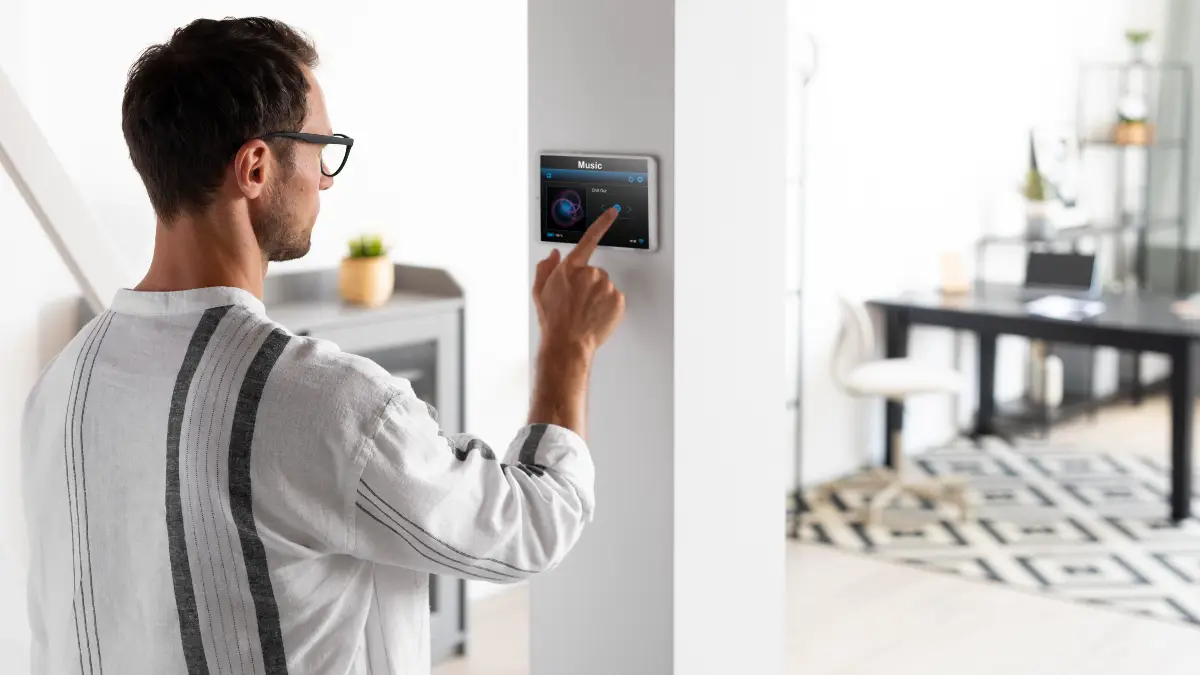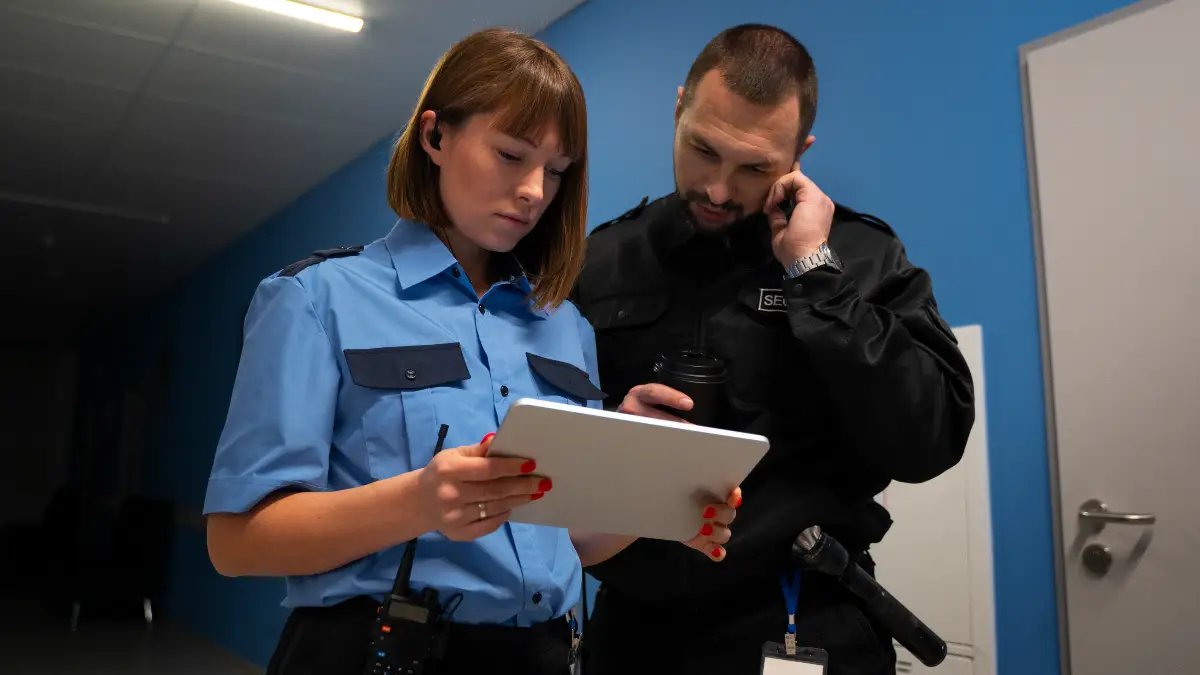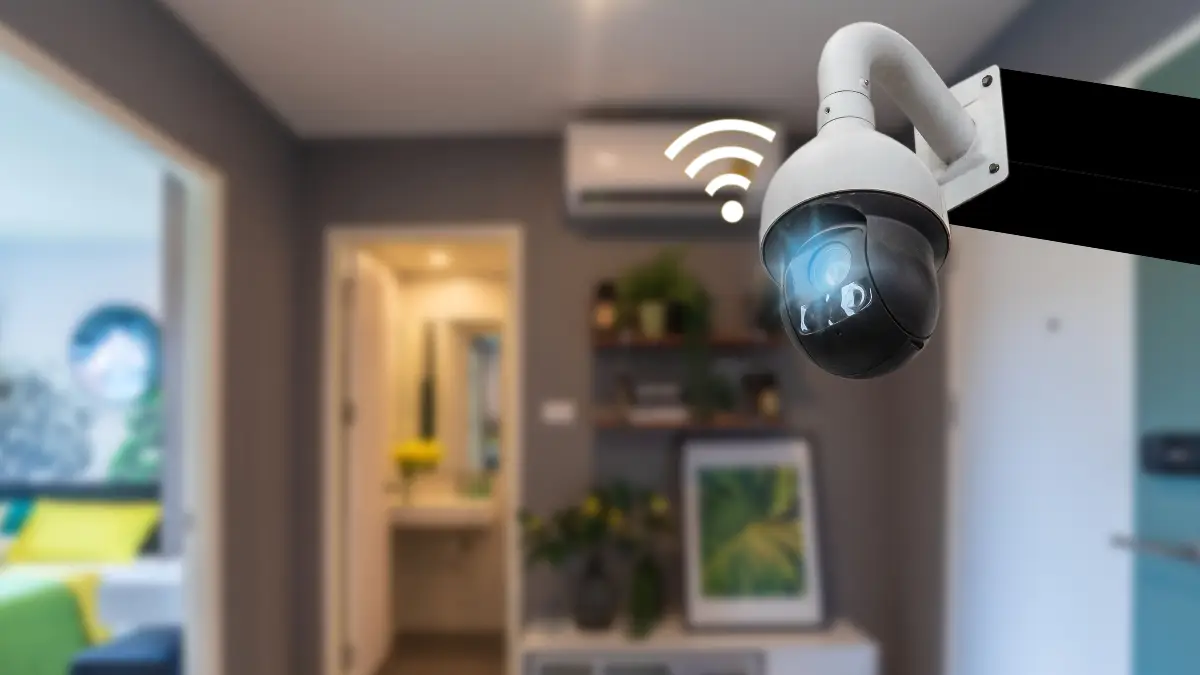Most homeowners install security systems believing they’re creating an impenetrable fortress around their family and belongings. The monthly monitoring fees, professional installation, and high-tech equipment feel like solid investments in safety and peace of mind.
But what if that expensive security system is actually creating new risks you never considered? From delayed police response and false alarm penalties to overconfidence that leaves other vulnerabilities exposed, modern home security can paradoxically increase your danger.
Understanding these hidden pitfalls is crucial before they turn your protective shield into an unexpected liability that puts everything you value at greater risk.
The False Promise of Digital Security

Your alarm system won’t stop a burglar from breaking in. Security expert Jordan Frankel puts it bluntly. “Home security systems are not designed with the intent of physically preventing burglars or intruders from gaining entry to your home.
Their sole purpose is to emit a shrilling alarm that will get attention and in rare occasions frighten off a would-be intruder.”
You think you’re safer with that smart security system. But you’re actually facing two dangers now instead of one.
Yes, homes without security systems are 300% more likely to be burglarized. But here’s what the sales rep didn’t tell you: your home network now faces 10 attacks every single day, according to NETGEAR’s 2024 security report.
Every connected camera, smart lock, and sensor becomes a door hackers can walk through. And 99.3% of all attacks exploit known vulnerabilities—problems manufacturers knew about but never fixed.
The University of North Carolina Charlotte study shows 83% of burglars check for alarm systems before breaking in.
Good news, right? Sure, 60% will pick another house when they spot one. But here’s what happens next: you relax. You skip the deadbolt because you have a smart lock. You ignore the flimsy door frame because the alarm will protect you.
Wrong. 56% of break-ins happen through front or back doors, smart lock or not. That expensive system didn’t strengthen your door frame. It didn’t fix the weak strike plate. It just made you think you were safe.
This false sense of security gets dangerous fast. You stop checking if doors are locked. You trust app notifications over your own eyes. You forget that a $2,000 security system can’t stop someone who really wants in—it just tells you they’re already inside.
Smart home vulnerabilities multiply with each device you add. Every camera needs internet access. Each sensor connects to your WiFi. Your security system becomes the very thing that makes you vulnerable. And criminals know this better than you do.
Critical Vulnerabilities Affecting Millions of Homes

8.7 million security devices are vulnerable to hijacking right now. That’s not a typo. Bitsight researchers found these devices sitting online, waiting for someone to take control.
The Open Web Application Security Project just released their 2025 IoT Top 10 vulnerabilities list. Number one? Weak passwords. Sounds basic, but 52% of manufacturers still fail basic password security. They ship devices with “admin/admin” or hardcode passwords you can’t change.
Take the Chirp Systems smart lock disaster. It scored 9.1 out of 10 on the severity scale—almost as bad as it gets. The problem? Hardcoded credentials buried in their Android app. Over 50,000 homes have these locks. Researchers told Chirp about this three years ago. Still not fixed.
AVTECH IP cameras are worse. They scored 8.8 out of 10 for a vulnerability that lets anyone run code on your camera without a password. AVTECH knows about it. They just don’t care. These cameras are spreading malware across the internet as you read this.
Your smart devices talk to each other using Zigbee or Z-Wave protocols. Both have serious problems. Zigbee leaks encryption keys when devices pair. Get the key once, control everything forever.
Z-Wave has four critical vulnerabilities (CVE-2020-9057 through 9060) that allow replay attacks. Someone records your “unlock door” command and plays it back whenever they want.
LoT attacks jumped 107% last year. Criminals found over 40,000 security cameras with no password protection at all. Just type in the IP address and watch someone’s home. Live.
Most people connect security devices to their main WiFi network. Big mistake. When hackers compromise your camera (the weakest link), they access your computer, phone, everything. It’s like giving a thief your house key because they picked the lock on your shed.
Network segmentation failures mean one compromised device becomes a highway to your entire digital life.
That smart doorbell with outdated firmware? It’s now the entry point for ransomware on your laptop. The baby monitor you bought on sale? It’s mining cryptocurrency for hackers while exposing your home network.
These aren’t sophisticated attacks requiring genius hackers. They’re automated scans looking for easy targets. And with 8.7 million vulnerable devices online, they find plenty.
Why Professional Criminals Target Smart Security First

Criminals shop for victims on Shodan.io the same way you shop on Amazon. Type in a camera model number, and boom—thousands of vulnerable homes appear on a map. Click one, and you’re watching someone’s living room.
Here’s how easy security system jamming has become. SimpliSafe, one of the biggest names in home security, can be defeated with a $5 garage door opener from Amazon. Push the button, jam the signal, walk right in. The system can’t call for help if it can’t connect.
Smart criminals don’t break in blind anymore. They compromise your cameras first and watch you for weeks. Learning your schedule. When you leave. When you come back. Where you keep valuables. Your own security system becomes their surveillance tool.
Some security product manufacturers have allowed some IoT devices to work in conjunction with the alarm system, possibly allowing a trojan horse into the dwelling. One vulnerable device gives access to everything.
Before entering your home, sophisticated thieves disable your system remotely. They’ve already watched you enter your alarm code through your own cameras. They know which sensors to avoid. They’ve tested response times by triggering false alarms. Your security system becomes their blueprint.
Law enforcement response has collapsed in many areas. MacDowell explains: “Some agencies have instituted a non-response policy to alarm systems unless the alarm has been verified.” Translation? Cops won’t come for an alarm. They need video proof or a person calling 911. Criminals know this.
Jordan Frankel doesn’t mince words about the danger: “Relying solely on a home security system to protect your family from criminals could quite possibly be the last mistake you make.”
The math is simple for criminals. Why pick locks when you can disable alarms remotely? Why guess if someone’s home when their cameras tell you? Why worry about police response when departments openly state they won’t respond to unverified alarms?
Your smart security system isn’t just failing to protect you. It’s actively helping criminals by providing reconnaissance, showing vulnerabilities, and creating false confidence that leaves you exposed.
What’s the Real Response Time for Home Security Alarms?

When a break-in occurs, every second counts—but your security system might not be as fast as you think.
Most homeowners have a clear expectation: when someone breaks into their home, the alarm sounds instantly, the monitoring center gets notified right away, and help is dispatched immediately.
The reality is quite different.
Security system response times aren’t standardized, and the delays might shock you. What seems like an instant process can actually take several minutes to unfold—potentially giving intruders plenty of time to complete their crime.
Understanding the Two-Phase Response Process
Security system “response time” actually consists of two distinct phases:
- Entry Delay Period: The grace time built into your system before the alarm actually sounds
- Signal Transmission Time: How long it takes for the alarm signal to reach your monitoring company
The Entry Delay Most systems include a programmed delay to prevent false alarms when you enter your own home. Here’s what major providers typically offer:
- ADT: 10-30 second standard delay
- Brinks: Up to 45 seconds
- Frontpoint: 30-45 second range
- Guardian & Xfinity: Full 60-second delays possible
Many systems allow homeowners to extend these delays even further—sometimes up to 3 full minutes.
Signal Processing After the alarm finally triggers, there’s additional time needed for:
- The signal to travel through your connection (cellular, WiFi, or landline)
- The monitoring center to receive and process the alert
- Staff to begin their verification protocol
This second phase typically adds another 15-60 seconds, though technical issues can extend this significantly.
These delays can result in total response times exceeding 3-4 minutes before anyone even knows there’s a problem. During an active burglary, that’s often enough time for criminals to grab valuables and escape—all before the monitoring process even begins.
Police Often Won’t Come When Your Home Alarm Goes Off

Even with a top-tier security system, don’t count on police showing up automatically when your alarm triggers.
Here’s what most homeowners assume: when their security alarm sounds, the monitoring company calls the police, and officers are dispatched to investigate. This assumption could leave you dangerously unprotected.
The reality is that law enforcement agencies increasingly require proof beyond just an alarm before they’ll send officers to your home.
The Numbers Tell a Troubling Story
Research reveals that police response isn’t guaranteed in most major population centers:
- Cities with 50,000+ residents: Over 40% don’t guarantee police will respond to residential alarms
- Major metropolitan areas (1M+ residents): A staggering 80% lack guaranteed response policies
Why Police Departments Are Stepping Back
The reason is simple: false alarms have reached crisis levels. When home security systems activate, they’re triggered by actual emergencies only 5% of the time.
The other 95% stem from everyday occurrences:
- Homeowners forgetting their disarm codes
- Delivery personnel triggering motion sensors
- Pets setting off detectors
- Weather-related sensor malfunctions
- Wildlife activating outdoor cameras
The Resource Drain Problem
These false alarms create a massive burden on law enforcement:
- 36 million alarm calls flood police departments annually
- $1.8 billion in taxpayer money spent responding to mostly false alerts
- Officers pulled away from genuine emergencies and active crimes
The New Reality: Verification-Only Response
Growing numbers of police departments now require additional evidence before dispatching officers. Some, like the Seattle Police Department, have implemented complete no-response policies for unverified alarms.
This means your security system might successfully detect and report a break-in, but without secondary confirmation—like video evidence or a witness—police may never show up at all.
What This Means for Your Home Security
Simply installing an alarm system isn’t enough anymore. Modern home protection requires multiple layers of verification to ensure law enforcement will actually respond when you need them most.
Why a home security camera might not be enough

Video surveillance has become the go-to security solution for many homeowners, and for good reason.
Doorbell cameras and security cameras offer visual deterrence and valuable evidence collection. However, treating cameras as a standalone security solution leaves significant gaps in your home’s protection.
The most effective security strategies integrate multiple technologies—motion detectors, entry sensors, professional monitoring, and cameras—to create overlapping layers of defense that compensate for each system’s individual weaknesses.
The Blind Spots of Camera-Only Security
Many homeowners fall into the trap of thinking that installing a few cameras equals comprehensive security. This approach has several critical flaws. Cameras are passive devices that only record what they can see—they can’t physically prevent intrusions or automatically summon help.
If you’re not actively watching the live feed, incidents can unfold completely unnoticed. Many camera systems only send notifications after motion is detected, which may be too late if an intruder moves quickly.
Additionally, cameras can be disabled, obscured, or avoided entirely by savvy criminals who spot them and find blind spots in your coverage.
Building a Multi-Layered Defense Strategy
The strongest home security approach treats cameras as one component within a larger protective ecosystem.
Professional security systems integrate door and window sensors that trigger immediate alerts when breached, regardless of whether cameras capture the event.
Motion detectors provide interior coverage that cameras might miss, while professional monitoring ensures someone is always watching for threats even when you’re asleep or away.
Smart integration allows all these components to work in harmony—when a door sensor triggers, cameras can automatically begin recording, lights can activate, and monitoring centers can be notified simultaneously.
This coordinated response creates multiple fail-safes that dramatically improve your chances of detecting and deterring threats before they escalate.


